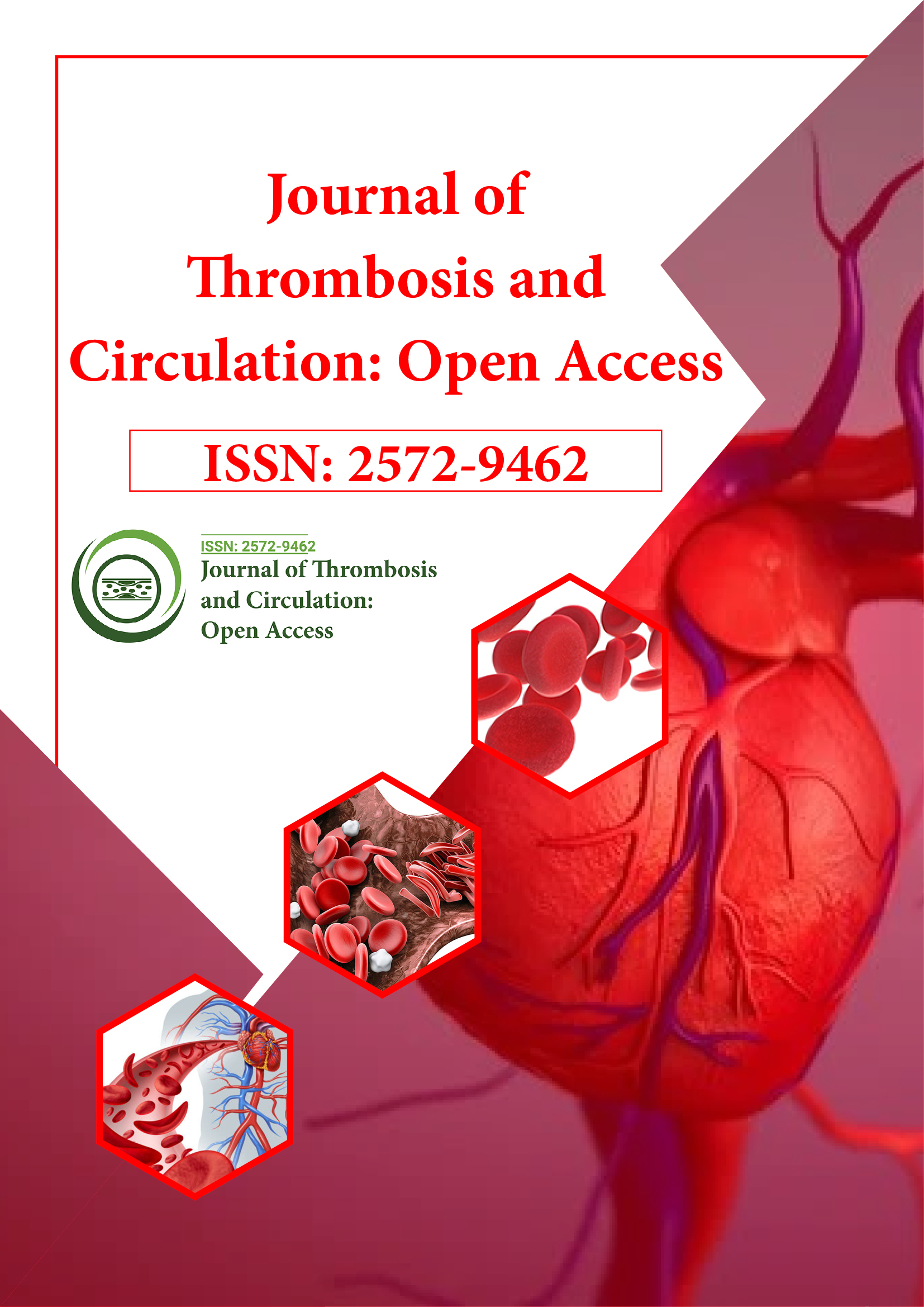Indexed In
- RefSeek
- Hamdard University
- EBSCO A-Z
- Publons
- Google Scholar
Useful Links
Share This Page
Journal Flyer

Open Access Journals
- Agri and Aquaculture
- Biochemistry
- Bioinformatics & Systems Biology
- Business & Management
- Chemistry
- Clinical Sciences
- Engineering
- Food & Nutrition
- General Science
- Genetics & Molecular Biology
- Immunology & Microbiology
- Medical Sciences
- Neuroscience & Psychology
- Nursing & Health Care
- Pharmaceutical Sciences
Perspective - (2023) Volume 9, Issue 4
Innovations in Endovascular Intervention for Leriche Syndrome Accompanied by Deep Vein Thrombosis
Naito Mowia*Received: 19-Jun-2023, Manuscript No. JTCOA-23-22266; Editor assigned: 21-Jun-2023, Pre QC No. JTCOA-23-22266 (PQ); Reviewed: 06-Jul-2023, QC No. JTCOA-23-22266; Revised: 13-Jul-2023, Manuscript No. JTCOA-23-22266 (R); Published: 21-Jul-2023, DOI: 10.35248/2572-9462.23.9.231
Description
Leriche syndrome, also known as aortoiliac occlusive disease, is a rare condition characterized by the obstruction or narrowing of the distal abdominal aorta and the common iliac arteries. It typically affects middle-aged or elderly men and is often associated with significant morbidity and mortality. When Leriche syndrome coexists with Deep Vein Thrombosis (DVT), treatment becomes even more challenging. However, with advancements in medical technology, endovascular therapy has emerged as a potential approach to effectively manage this complex condition. Leriche syndrome occurs due to the gradual buildup of atherosclerotic plaque within the abdominal aorta and iliac arteries, leading to reduced blood flow to the lower extremities. This diminished blood flow manifests as claudication (leg pain during exercise), impotence, and absent femoral pulses. In some cases, patients with Leriche syndrome may also develop deep vein thrombosis, where blood clots form within the deep veins of the legs. Deep vein thrombosis further complicates the management of Leriche syndrome as it increases the risk of limb-threatening ischemia and pulmonary embolism. Prompt diagnosis and treatment are crucial to prevent long-term complications and improve patient outcomes.
Role of endovascular therapy
Endovascular therapy has revolutionized the treatment of Leriche syndrome with deep vein thrombosis by offering a less invasive alternative to traditional open surgical procedures. It involves accessing the affected blood vessels through a small incision and navigating a catheter with imaging guidance to the site of the obstruction. Once the catheter reaches the targeted area, various techniques can be employed to address the underlying pathology.
Balloon angioplasty: In cases of arterial stenosis or occlusion, a balloon-tipped catheter can be inflated to compress the plaque against the vessel wall, widening the arterial lumen and restoring blood flow.
Stenting: To maintain the patency of the treated artery, a stent-a mesh-like tube-is inserted to support the vessel walls and prevent restenosis (re-narrowing).
Thrombolysis: When deep vein thrombosis coexists, medications known as thrombolytics can be administered directly into the clot through the catheter, dissolving the obstruction and restoring venous flow.
Benefits and outcomes
Endovascular therapy offers several advantages over traditional surgical interventions for Leriche syndrome with deep vein thrombosis. Firstly, it is a minimally invasive procedure, resulting in smaller incisions, reduced postoperative pain, shorter hospital stays, and faster recovery times. The risk of complications, such as infection and excessive bleeding, is also significantly decreased.
Moreover, endovascular therapy can often be performed under local anesthesia, making it suitable for patients who are deemed high-risk or ineligible for open surgery due to underlying medical conditions. The ability to customize the treatment based on the individual patient's anatomy and pathology ensures better outcomes and higher procedural success rates. Numerous studies have demonstrated the effectiveness of endovascular therapy in relieving symptoms, restoring blood flow, and improving the quality of life for patients with Leriche syndrome and deep vein thrombosis. Long-term follow-up studies have shown favorable results, including reduced amputation rates, improved walking distances, and enhanced sexual function. Endovascular therapy has emerged as a highly effective treatment modality for patients with Leriche syndrome complicated by deep vein thrombosis. This minimally invasive approach offers numerous benefits, including improved patient outcomes, shorter recovery times, and reduced complication rates. By restoring blood flow to the lower extremities and addressing the underlying thrombotic obstruction, endovascular therapy provides a promising solution for this complex condition.
While endovascular therapy has shown significant success, it is essential to consider each patient's individual circumstances and consult with a vascular specialist to determine the most appropriate treatment plan. Continued advancements in endovascular techniques and technology has effecient role for further enhancing outcomes and improving the lives of individuals living with Leriche syndrome and deep vein thrombosis.
Citation: Mowia N (2023) Innovations in Endovascular Intervention for Leriche Syndrome Accompanied by Deep Vein Thrombosis. J Thrombo Cir.9:231.
Copyright: © 2023 Mowia N. This is an open-access article distributed under the terms of the Creative Commons Attribution License, which permits unrestricted use, distribution, and reproduction in any medium, provided the original author and source are credited.
